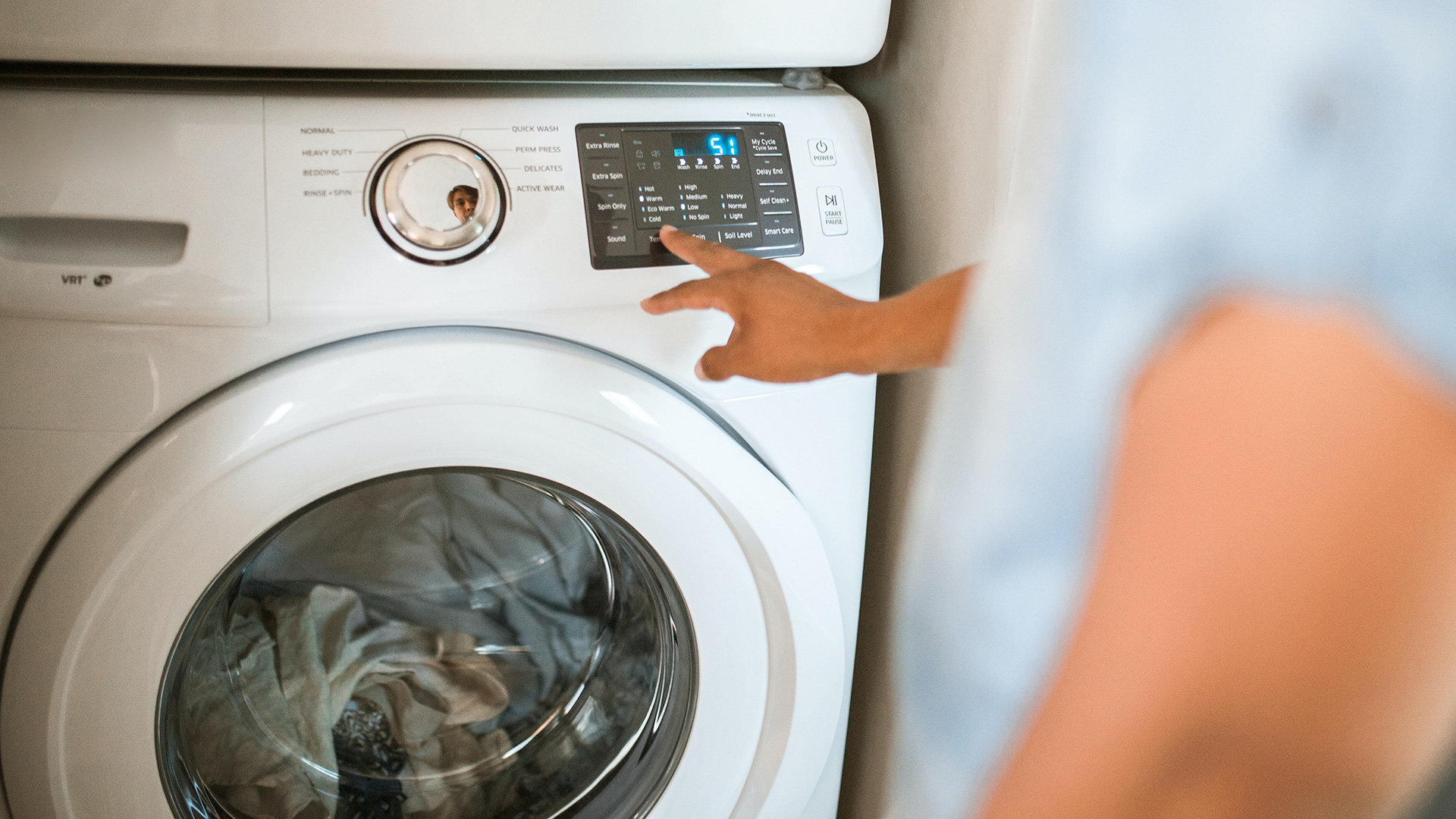How to clean a pillow: the ultimate guide to a plump and hygienic headrest
Does your pillow require hand-washing, or can it be put in the machine? What about drying? Our expert guide explains all...


Bethan Morgan
As horrid as it sounds, our bedding and the best pillows is constantly absorbing our oil, sweat, drool and bacteria. If you have pets or children who spend time on your bed, those germs are only going to multiply, so knowing how to keep everything clean is vital.
The pillow and pillowcase is the main place where dirt and grime gathers, and you should wash your sheets and pillow cases every one to two weeks. Most pillowcases can be machine-washed, although there are some exceptions, so do check the care label first. That's the easy bit, but you also need to clean the inside of your pillow, albeit not quite as regularly. This will get rid of whatever's made its way into the pillow, as well as helping to kill dust mites.
Different pillow types need to be treated in different ways – memory foam vs down vs synthetic pillow stuffing all requires different approaches. If you've invested in a pillow, you don't want to ruin it by putting it in your washing machine when it's not designed for that. Read on for exactly how to clean a pillow, including hand and machine washing.
For the rest of the best, check our guides to how to clean a mattress and how to clean a duvet.
How to hand wash a pillow
Some types of pillow are not suitable for machine washing. In particular, memory foam and latex pillows should never be placed in the best washing machine, and it’s generally advised not to submerge them in water at all.
To clean a memory foam or latex pillow, first sprinkle the top with baking soda – that's bicarbonate of soda, if you're a brit – covering as much of the pillow as possible. Leave it to work its magic (30 minutes minimum), vacuum it using the brush attachment of your vacuum cleaner or a handheld vacuum. Flip the pillow and repeat, and this will help your pillow to stay smelling fresh.
Next, mix a small amount of gentle detergent with lukewarm water and use a cloth to remove any stains. Gently rub the material using a circular motion until the stains have been removed. You should then dip a new cloth into (just) water and use it to remove any remaining soap or foam. Finally, leave the pillow to dry in an airy, clean and secure area, preferably in the sun. Do not return the pillow to its case until it has dried fully.
Get all the latest news, reviews, deals and buying guides on gorgeous tech, home and active products from the T3 experts
If these measures aren’t enough and you need to deep clean your pillow to remove unpleasant smells, then check the care label, as instructions vary wildly between different manufacturers.
How to machine wash a pillow

The simplest way to clean a pillow is by washing it in the machine. Pillows filled with down, feather and polyester are typically machine-washable, although it’s again vital to read the care label and follow the instructions carefully. Normally, such pillows are best washed at a low temperature and with a small amount of gentle detergent.
Although some manufacturers may stipulate line-drying, most down, feather and polyester pillows can be tumble-dried on a low heat. A tried and tested way of keeping your pillows fluffy is to add a tennis ball tied up inside a sock to your dryer. Alternatively, you can buy commercially produced ‘dryer balls’ that achieve the same effect.
After you remove your pillows from the dryer, it's vital to air them, as any moisture that’s left to fester in your pillow is only going to encourage bacterial growth and dust mite infestation. Leave your pillows in a safe, clean and dry place, ideally in the sun, for at least 2-3 hours. Make sure you don't put them back on the bed until you’re confident they’re dry throughout.
Pillow cleaning FAQs
How often should I wash my pillow?
Pillows should be washed once every 4-6 months. The exception is memory foam pillow, which is not designed to be washed, per se, although you should still spot clean it. Pillow cases should be washed weekly, or at a push, once a fortnight.
How often should I replace my pillows?
The general rule is you should replace your pillows every year or two. However, this will vary from pillow to pillow. If your pillow is starting to develop lumps and bumps, does supports your head adequately, or stays folded when folded in two, those are all signs it's time to update it.

Tom May is a freelance writer and author of the book, Great Ted Talks: Creativity. He has been editor of Professional Photography magazine, associate editor at Creative Bloq, and deputy editor at net magazine. He has also worked for a wide range of mainstream titles including Radio Times, NME, Heat, Company and Bella.
- Bethan MorganHome Editor